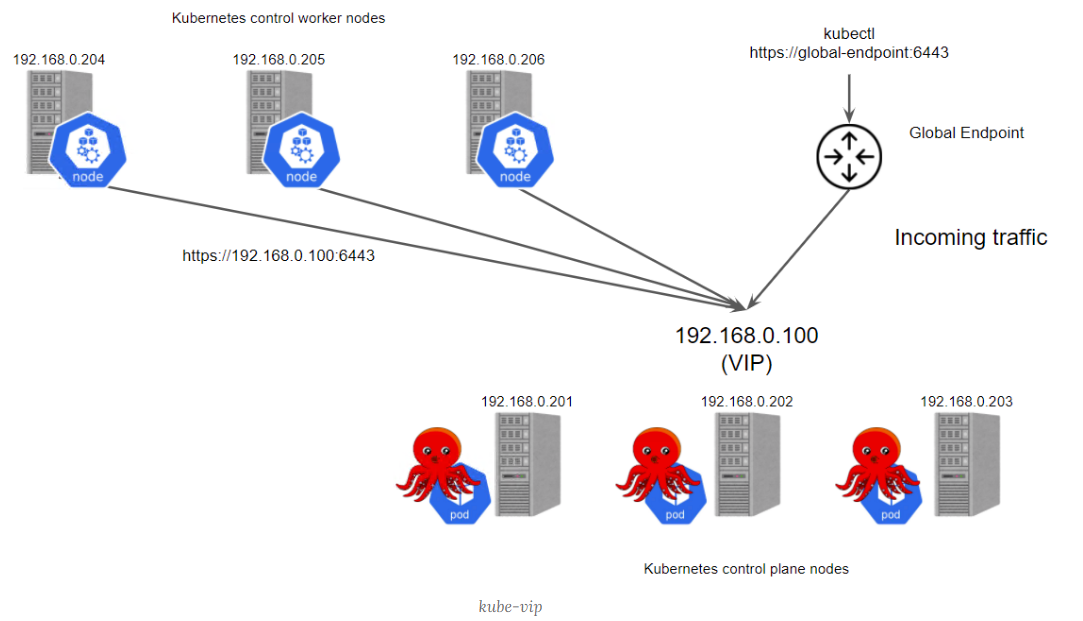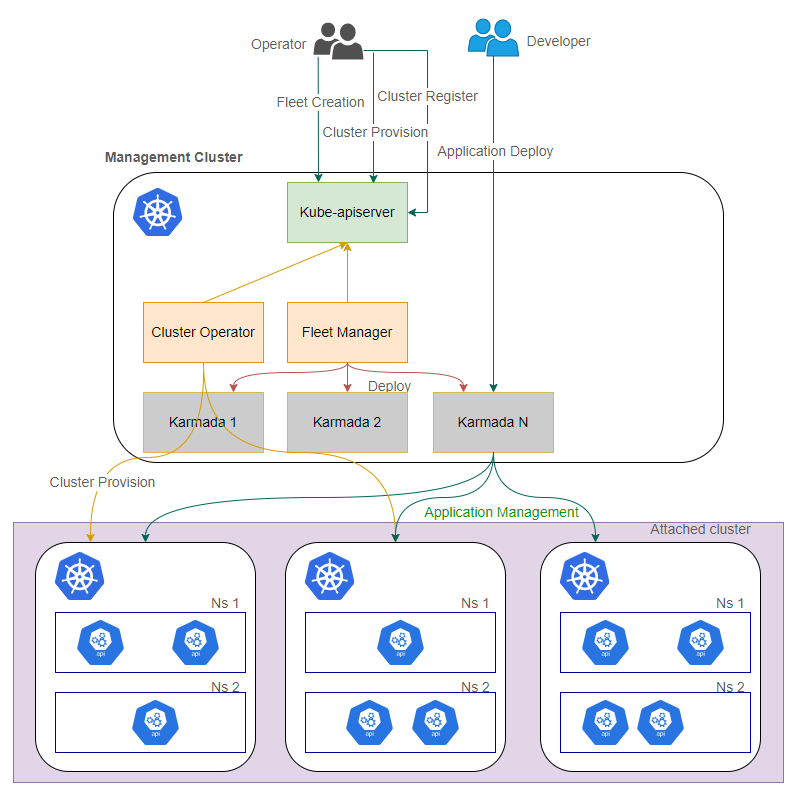Kurator v0.3.0 Version Released! Cluster Fleet Powering Unified Management of Distributed Clouds
April 8, 2023 - Kurator officially releases version v0.3.0.
Kurator is an open-source distributed cloud-native suite that helps users construct a personalized distributed cloud-native infrastructure by integrating mainstream open-source technology stacks, thus facilitating the digital transformation and distributed upgrade of enterprise businesses. The v0.2 version of Kurator already had the core capability to manage multi-cloud and heterogeneous infrastructures, introducing the Cluster Operator component to support lifecycle management features such as cluster creation and cleanup for “AWS self-built clusters” and “local data center clusters.”
In the latest v0.3.0 release, Cluster Operator not only enhances the lifecycle management capabilities for both types of clusters but also abstracts multiple API objects from the v0.2.0 version into a single API object, cluster, for ease of use. Additionally, based on the cluster object, Kurator introduces the concept of a fleet. Each fleet represents a physical cluster group, facilitating unified orchestration, scheduling, traffic governance, and monitoring operations for Kurator in the future. Currently, Kurator’s fleet management supports several features, including the lifecycle management of the fleet control plane and cluster registration and deregistration to the fleet.
With this, Kurator unifies the cluster view through cluster fleets. This means that Kurator now possesses the ability to manage clusters distributed across any cloud with a consistent user experience, further assisting users in upgrading their distributed cloud-native architecture.
Kurator v0.3.0 Key Features Introduction
Enhanced Cluster Lifecycle Management
Kurator manages the lifecycle of clusters through the Cluster Operator component. Based on Cluster API, the Cluster Operator not only manages the cluster lifecycle but also unifies and simplifies the configurations needed to create clusters, providing a simple and user-friendly API for managing clusters on different cloud platforms. Currently, Cluster Operator supports “local data center clusters” and “AWS self-built clusters.”
On-Premise Clusters
Kurator manages the lifecycle of local data center clusters based on kubespray. Different from kubespray, Kurator uses an easier-to-understand and configure cloud-native declarative approach to manage clusters.
Compared to the v0.2.0 version, the v0.3.0 version of Kurator brings the following enhanced features:
- Batch scaling of worker nodes. Kurator now supports adding, deleting, or replacing multiple worker nodes in an existing cluster in a declarative manner. Users only need to declare the final desired state of the worker nodes, and Kurator can complete the batch scaling of the nodes without any external intervention.
- Cluster version upgrade. Users can declare the Kubernetes version they want to upgrade to on the API object, and Kurator will automatically upgrade the nodes of the target cluster.
- Enhanced high availability of the cluster control plane. Kurator provides a VIP-based enhanced cluster control plane high availability solution. In this scheme, Kurator utilizes the capabilities of kube-vip to achieve inbound traffic load balancing across multiple control plane replicas using a VIP.
User Manual: Kurator on-premise Cluster Lifecycle
AWS Self-Built Clusters
Kurator manages the lifecycle of AWS self-built clusters through the Cluster Operator. Compared to the Cluster API support for AWS self-built clusters, Kurator simplifies the deployment model provided by the Cluster API, obtaining full management capabilities by deploying the Kurator cluster operator component.
v0.3.0 brings the following feature enhancements:
- Improved usability. Kurator has added a series of user experience improvements, including validating credentials before creating a cluster, automatically managing IAM roles and policies required by cloud platform operators, verifying the existence of dependent resources, and centrally displaying error information.
- One-click association of IAM with K8s identity. By associating AWS IAM roles with Kubernetes Pod identities, IAM can verify and accept tokens issued by Kubernetes, eliminating the need to create and distribute AWS credentials. This association has advantages like minimum privilege, credential isolation, and auditability, but it requires multiple steps to set up. Kurator now enables this feature with one click through Cluster.Spec.PodIdentity, simplifying the configuration.
User Manuals:
Cloud-Native Fleet Management
Kurator introduces the logical unit “fleet,” representing a physical cluster group, aiming to manage a set of clusters uniformly. Fleets allow you to manage clusters distributed across any cloud easily and consistently.
Kurator implements fleet control plane lifecycle management through the Fleet Manager and can easily add or remove clusters from a fleet. In the future, Kurator will support Fleet-level application orchestration and provide unified namespaces, ServiceAccounts, and Services across all clusters in the Fleet to enable service discovery and communication between multiple clusters. Additionally, Kurator will aggregate monitoring metrics from all clusters.
The Kurator Fleet Manager operates as a Kubernetes Operator, responsible for the lifecycle management of the Fleet control plane and the registration and deregistration of clusters.
User Manual: Kurator Fleet Manager
Kurator: One-Click Construction of Distributed Cloud-Native Platform
Visit Kurator Release v0.3.0 to experience and upgrade to the latest version of Kurator v0.3.0, and build your personalized distributed cloud-native platform. If you are interested in or have insights into the new features of Kurator, you are also welcome to join the Kurator community to participate in community discussions and development.
- GitHub Address: Kurator on GitHub
- Slack Address: Join Kurator on Slack

